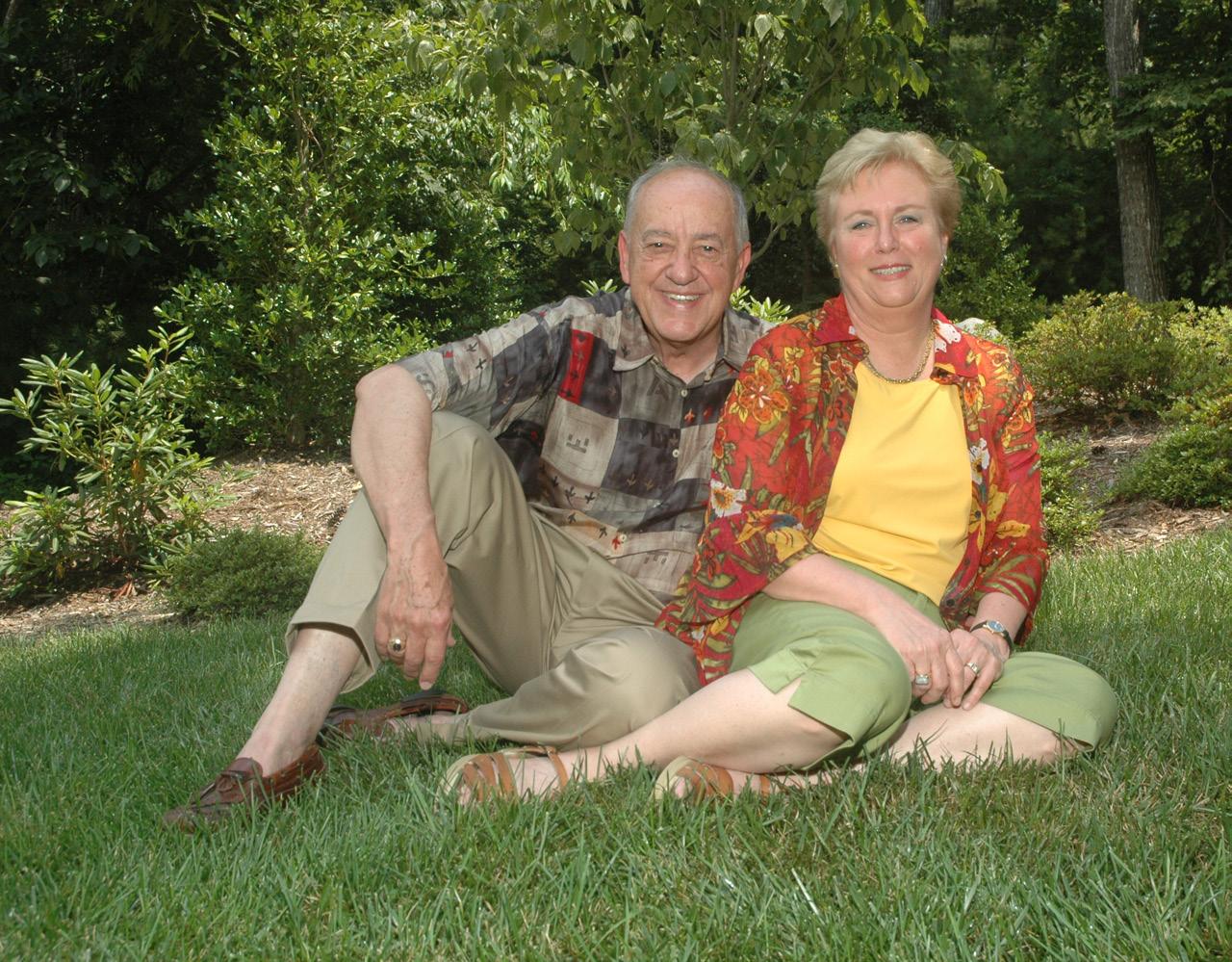
3 minute read
Seeing the Future Through a Transformative Pledge
BY JIM ROGALSKI
The blurred vision came without warning. “While on a trip in Europe, suddenly I
couldn’t read the newspaper. It was like looking through tears,” remembers Elizabeth “Robin” Ives Hamme of Flat Rock, North Carolina.
Once home, her long-time ophthalmologist referred her to a macular degeneration specialist who, after examination, told her bluntly that she likely suffered from Stargardt disease, she would become blind over time, and there was nothing anyone could do to help her. “I was blown away and in utter shock,” she says. “And I thought to myself, ‘That’s not good enough. I want a referral to Duke.’ ” At Duke Eye Center she met Alessandro Iannaccone, MD, MS, FARVO, director of the Center for Retinal Degenerations and Ophthalmic Genetic Diseases. “The first question I had for him was,
‘Am I going to go blind, when and how?’ ” Hamme says. “The first step was to confirm the diagnosis which was a complex process,” Iannaccone says. “Additional testing also revealed a supplemental issue with the function of the mitochondria—the energy machinery of our cells—and helped point in that direction. Ultimately, further testing did confirm the molecular diagnosis of Stargardt disease.” Once this was confirmed, Iannaccone told her, ‘You’re not going to go blind. The greatest risk is losing central vision but not peripheral vision.’ “ He told her she was at risk of becoming legally blind but still able to see. Stargardt’s disease in its typical form is inherited from each of the parents, who are unaware healthy carriers. It typically affects children and teens, but in many instances can present as a late-onset form that will appear much later in life. While there currently is no cure, Iannaccone has been treating Hamme with a variety of dietary supplements that help to maintain the function of her photoreceptors and, in her special case, the mitochondria in her retinal cells, which provides enhanced neuroprotection to the retina. He also was able to offer a bit of hope in the form of a clinical trial he will start soon. “The trial is called SeaSTAR and will use an oral drug that will affect the way the retina uses and recycles vitamin A,” Iannaccone says. “It’s hoped that this medication will reduce the accumulation of a toxic compound that leads to Stargardt disease.” Hamme says she is impressed with Iannaccone’s steadfast commitment to finding a cure for her disease. “Every time something new comes up he’s right on top of it,” Hamme says. “His care, thoroughness and compassion are not only first-rate, but he is really committed to discovering solutions.” Which is why she and her husband, Gene, have made a significant pledge through their estate to establish an endowment for hereditary and degenerative retinal disease in the Duke Department of Ophthalmology. “This planned gift is not about me,” she says. “I believe so completely that Dr. Iannaccone and his group are worthy of being invested in so they can help others in the future. He has a wonderful phrase about taking research from the bench to bedside, and I think that’s so important. He’s working in real time to make advances.” Iannaccone says gifts like the Hamme’s are crucial to allowing himself and the mere handful of other retinal degeneration researchers throughout the country to pursue the discovery, and development of, treatments and cures for these incapacitating disorders. “Their generosity will help to ensure
that our center has the longevity and future ability to foster and develop promising research,” he says. “We are very grateful.” Alessandro Iannaccone, MD, MS, FARVO Professor of Ophthalmology










